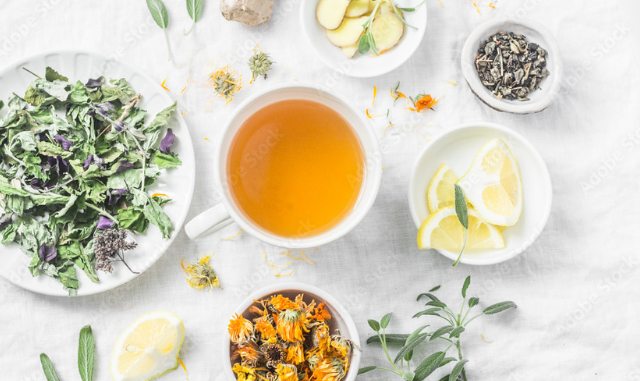
Ideal Herbal Tea Blends
Herbal tea blends offer a wide variety of health benefits depending on herbs used to create the tea. The global tea market is valued at 260 billion U.S. dollars in 2023 and is expected to increase to 362 billion U.S. dollars by 2029. The tea market is expected to grow in 2025 driven by the health and wellness trends in sustainability of living well. The global tea market is expected to generate 294.4 billion in revenue in 2025. Consumers are looking for new experiences in the beverage industry for exotic herbal tea blends featuring flavors of fruits and citrus is expected to be popular. Matcha tea is becoming more common in baked goods, smoothies, candies consumed as a healthier alternative to caffeinated beverages. Functional teas are promoted for specific health benefits such as overall wellbeing, digestion, boost energy, and improving cardiovascular health. Herbal teas like dandelion root and nettle leaf tea support liver function and help the body detoxify.
Tea is thought to have originated in China with records of use dating back to 3rd century AD. It was originally used as a medicinal beverage as the drink was popularized for recreational use in the Tang dynasty continuing to spread to other Asian countries. According to legend tea has been known in China since 2700 BCE. For one thousand years as it was a medicinal beverage obtained by boiling fresh tea leaves in water for a few minutes to infuse the herbal tea blend. Around the 3 rd century CE it became a daily drink and tea cultivation and processing began. The first published account methods of planting, processing and drinking tea arrived in 350 CE. Around 800 the first tea seeds were brought to Japan where the first cultivation became established by the 13th century. Chinese from Amoy brought tea cultivation to the island of Formosa Taiwan in 1810. Tea cultivation began under the Dutch who brought tea seeds from Japan in 1826 including seeds, workers and implements from China in 1833.
In 1824 tea plants were discovered in the hills along the Frontier between Burma and the Indian state Assam. The British introduced tea culture to India in 1836 into Ceylon Sri Lanka in 1867. The Dutch East India Company carried the first consignment of China Tea to Europe in 1610. In 1669 England East India Company brought China Tea from the ports in Java to the London Market. Later tea was grown on British estates in India and Ceylon reaching Mincing Lane the center of the tea trade in London. By the late 19th and 20th century growing tea had spread to Iran, Sumatra, Russian Georgia extending to non Asian countries including Tanzania, Congo, Kenya, Uganda, Malawi. Mozambique, in Africa, Brazil, Peru in South America, and Queensland in Australia. Tea is expected to remain popular in 2025 with the growing market driven by consumer demand for healthy beverages. Functional specialty tea blends often use herbs like ashwagandha, holy basil, Licorice root, and ginseng are often featured in prominent herbal tea blends.
Hibiscus tea is a herbal tea blend made from the flowers of the plant Hibiscus sabdariffa. It has a natural tart flavor known for its deep vibrant red color. Hibiscus tea is a tisane tea made from camellia sinensis plant used as the basis of the tea. Hibiscus tea is high in antioxidants offering many potential health benefits, in particular it may promote weight loss, reduce growth of bacteria in cancer cells, and support health of the liver and heart, lowering blood pressure. “Traditionally herbal teas are widely consumed by locals for their biological effects. Recently with the increased incidence of neurodegenerative diseases herbal tea has attracted widespread attention for its preventive and therapeutic functions. Production of herbal tea mainly uses the leaves, buds, flowers, and fruits of medicinal plants as raw materials and has many biological properties such as anti-oxidation, anti-inflammatory, antibacterial, anti-diabetes, anti-cancer activities.” ScienceDirect
Yogi organic teas offer 6 delicious flavors to support overall wellness with blends purposefully blended with traditional Ayurvedic ingredients including herbs, spices and natural substances that are used to promote health and balance. Yogi Tea Get Well variety pack of teas includes popular selections for cold season support include Bedtime to support a good night’s sleep, Breath Deep to support Respiratory health, Echinacea supports Immune function, Throat Comfort supports the throat, Honey Chi Turmeric, Vitality a sweet spicy blend used to support overall health. Herbal tea blends are available online or at your local grocery store near you blended for flavor and overall wellness. Herbal teas infusions like green tea and oolong tea may help boost metabolism and aid in weight loss.
Cheers!
Patricia Lynn
Images Courtesy of okkijan2010 at AdobeStock

Leave a Reply